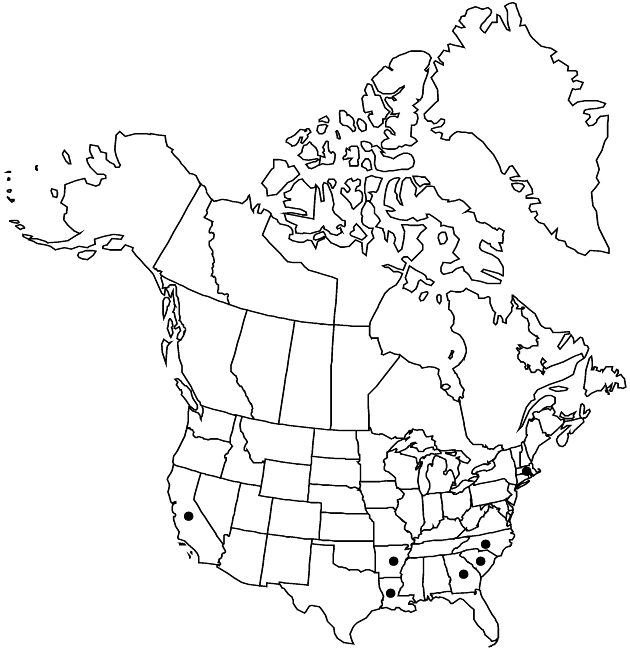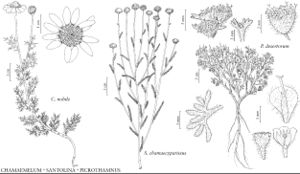Difference between revisions of "Santolina chamaecyparissus"
Sp. Pl. 2: 842. 1753.
Common names: Lavender-cotton
Treatment appears in FNA Volume 19. Treatment on page 498.
FNA>Volume Importer |
FNA>Volume Importer |
||
| Line 48: | Line 48: | ||
|publication year=1753 | |publication year=1753 | ||
|special status= | |special status= | ||
| − | |source xml=https://jpend@bitbucket.org/aafc-mbb/fna-data-curation.git/src/ | + | |source xml=https://jpend@bitbucket.org/aafc-mbb/fna-data-curation.git/src/f50eec43f223ca0e34566be0b046453a0960e173/coarse_grained_fna_xml/V19-20-21/V19_832.xml |
|tribe=Asteraceae tribe Anthemideae | |tribe=Asteraceae tribe Anthemideae | ||
|genus=Santolina | |genus=Santolina | ||
Revision as of 20:20, 16 December 2019
Subshrubs, silvery-gray to white. Leaf blades 1-pinnately lobed, 10–20(–40) × 1–3(–5) mm. Peduncles 3–6 cm. Phyllaries carinate, apices of inner rounded, ± lacerate to fimbrillate. Corollas 3–4 mm, gland-dotted. Cypselae 2.5–3 mm, angles sometimes narrowly winged. 2n = 18.
Phenology: Flowering Mar–Oct.
Habitat: Disturbed sites, abandoned plantings
Elevation: 0–400 m
Distribution

Ark., Calif., Ga., La., Mass., N.C., S.C., s Europe, n Africa.
Discussion
Santolina chamaecyparissus is widely cultivated and probably persists in the flora area in states other than those listed here.
Selected References
None.
Lower Taxa
None.
